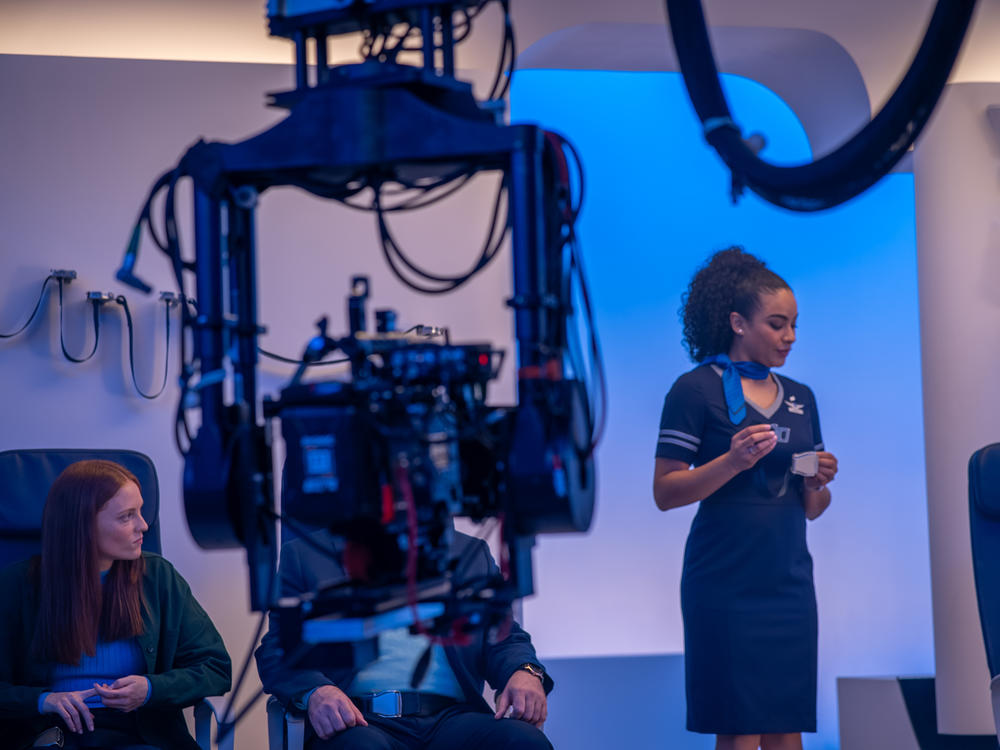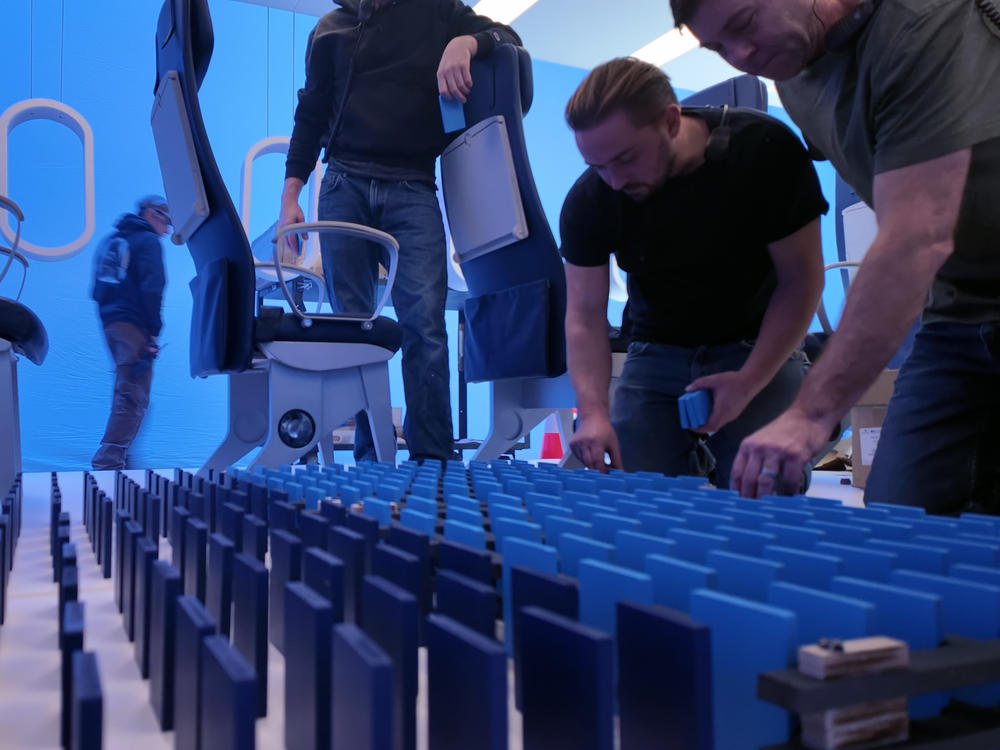Section Branding
Header Content
With flyers more distracted than ever, United rolls out a rebooted safety video
Primary Content
MONTREAL — The cast and crew on this soundstage are at the mercy of a little blue ball.
It's about the size of a billiard ball. It rolls, bounces, and floats its way through a Rube Goldberg machine — a complicated chain reaction that leads the viewer from scene to scene in United Airlines' new onboard safety video.
This is live action, not CGI. And the little blue ball doesn't always cooperate.
"Right now, nobody in this building wants to ever do a Rube Goldberg again," laughs director Karim Zariffa. And he's not totally joking. Even after the airline employees who make up the cast deliver a perfect performance, Zariffa says, "you still have to make the ball land where it should be."
United is hoping that some very long days on set will be worth it. Airlines are constantly fighting for the attention of their passengers who are distracted by screens of their own. It's a constant challenge to make those passengers focus on the safety briefing that's required before every commercial flight — thousands of times a day, every single day of the year.
"The safest safety video is one that people will want to watch even on your 45th viewing," said Meg Mitchell, the creative director at United, who helped oversee production of the safety video the airline unveiled Thursday.
There's not much room for creativity in the wording of onboard safety videos, Mitchell said, because they are largely dictated by federal regulators. So the airline focused instead on making the video as visually interesting as possible — even for frequent flyers.
"People start to tune out," Mitchell said in an interview. "And so we wanted something that felt like you could watch over and over and over again, and still want to pay attention to."
If you've flown recently, you've probably noticed your fellow passengers reading, playing video games, or just staring into their phones before takeoff — anything, in other words, except watching the onboard safety video.
For a while, those safety videos became a kind of arms race between airlines, as they competed to see who could come up with the funniest, weirdest, most viral videos.
The trend took off in 2007 when Virgin America introduced a dryly humorous animated video. And it peaked, arguably, in 2014, with an elaborate Air New Zealand production starring cast members of The Hobbit that's been watched more than 24 million times on YouTube.
But not everyone is a fan. Critics worry that humor may unintentionally distract passengers, who tend to remember the jokes, but not the actual safety message.
"It's too cognitively taxing, and then retention of information decreases," said Brett Molesworth, a professor of aviation safety at the University of New South Wales in Sydney, Australia, who has studied how much information passengers retain from safety videos. Molesworth says the shift toward longer, more elaborate concepts may be counterproductive.
"When you start pairing or introducing a storyline or some type of marketing, advertising, you're only going to adversely affect the retention of information," Molewsorth said.
All this seems to leave airlines in a bind. They need to grab your attention — but at the same time, they don't want the video to distract passengers from the safety message.
That's not an easy trick to pull off. But it is doable, says United's vice president for safety, Sasha Johnson.
"I'm very proud of the video we put forward," Johnson said. "I think it does strike the right balance between getting people to pay attention. But also delivering that information fresh every single time so they can be prepared."
Shooting for United's video ended in November. A few months later, a Japan Airlines jet burst into flames after colliding with another aircraft on a runway in Tokyo. Remarkably, all of the passengers evacuated safely, leaving their carry-on bags behind — one more reminder of why these onboard safety videos matter.


